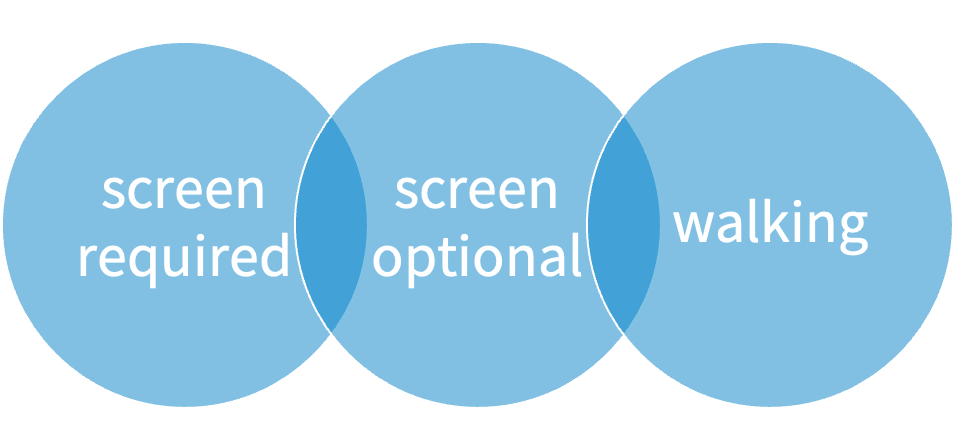
Why Zoom Is Terrible
Early in the pandemic, the New York Times published an article called “Why Zoom is Terrible,” which summed it up impeccably. It turns out, video meetings are replete with subtle disruptions in our usual ways of interacting that confuse and blur social cues. This is part of what contributes to the sense of unease and alienation we feel, especially after a long day of such encounters. The article draws a comparison between the consumption of video meetings and the consumption of highly processed food. Both can look good and even taste good, but they ultimately leave us feeling empty and malnourished. Importantly, looking at yourself on camera all day also creates hyper awareness of your appearance, which further contributes to a sense of unease. And, apart from this cognitive load, there is the well documented physical harm that results from sitting in front of our monitors all day. Still, we can all agree that video meetings are better than nothing. The important thing is to be intentional about how and when you use them and how you design these interactions.When Is a Meeting Not a Meeting?
First, ask yourself whether you need a video meeting in the first place. This decision tree published by the Harvard Business Review regarding whether to hold a meeting - in person or online - can be helpful. 
Importantly, the very first question proposed here is “Have I thought through this situation?” All too often, we default to scheduling a meeting when what we really need is time for ideation or strategic thinking. We also misuse meetings to externalize our thinking when the input of others is not actually necessary.
Be mindful of the requests implied by a meeting invitation. You are asking a lot of people when you ask them to meet with you, especially in the video modality. For one thing, you are requesting their undivided attention. You are asking that they stop what they're doing in the middle of their workday, show their face, and devote the entirety of their energy and focus to the topic you have proposed. You are also requesting that they interact with the subject within the parameters that you have defined for the meeting. It may be entirely appropriate to make these requests, but we should be conscious of them and challenge ourselves to imagine a less burdensome way to accomplish our objectives.
Keep It Moving
If you decide you really do need a meeting, then think about whether you need to be on camera and sitting in front of a monitor. Think about meetings on a continuum from "screen required" to "walking" and be explicit in your invitation about what you are asking of participants, and why. 
In “screen required” meetings, you might be editing or reading a document together. The nature of your work necessitates that people be able to read one another's expressions and interact with an artifact together in real time.
Meetings that are “screen required” because of the need for collaborative ideation can often be converted into “screen optional” meetings if a member of the group scribes while another person facilitates. Other participants in the meeting, then, are free to remain off camera and even stretch or walk.
In promoting wellness and combating video fatigue, our goal should be to aim for as many “walking” meetings as possible. In these types of meetings, we can catch up or ideate while moving about freely in our physical environments. If someone wishes to be on screen or share their surroundings, they can. But this is not necessary or required. The leader of a walking meeting is free to move about as well and their charge is merely to follow up in writing, if necessary, with a summary of agreements and next steps.
We All Have Needs, and That’s Okay
Especially if you need people on camera or in front of a screen, set meeting norms that make it okay that people take care of basic needs such as eating, standing, and stretching. Allow short breaks for the interruptions that most certainly will happen in the course of a normal life (e.g., bio breaks, children, animals, deliveries, etc.). And, be sure to schedule breaks at least every hour if you are meeting for a longer stretch of time. A best practice, in fact, is to turn the occasion of a meeting participant’s interruption into a break for everyone. In other words, rather than continuing without that person or attempting to salvage the meeting flow, simply gracefully transition into a short break.Creating healthy and productive meetings comes down to intentional design. Rather than defaulting to the idea that we need a video meeting to be productive, carefully determine whether you need such a meeting in the first place. And, if you do decide to go forward, make meeting design choices that prioritize wellbeing and create space for the natural unpredictability of our lives. Video meetings are here to stay, so let's use them in ways that works for us, instead of contorting ourselves in a way that works for them.